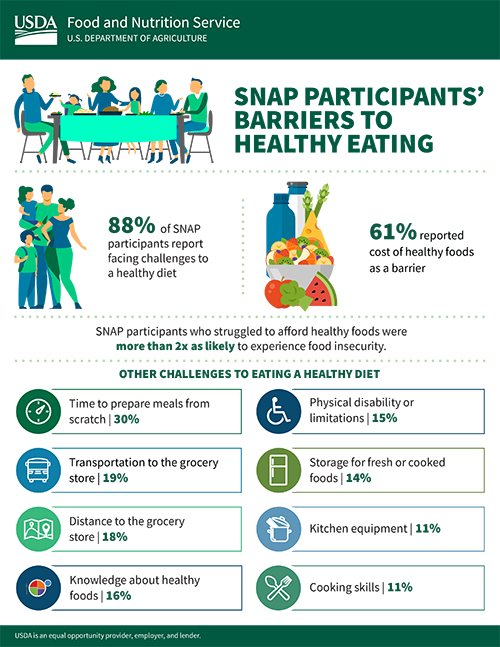DTA office reopening, important studies on SNAP, PEBT, and more!
And make sure you scroll down to the end of this eblast where you can find USDA’s press release on their findings in a recent study documenting that 9 out of 10 SNAP households face barriers in providing their household with a healthy diet for a full month. And please amplify the message - SNAP benefit amounts need to be boosted to improve access to nutritious foods!
- Access to EBT cards: DTA has set up a policy where, in order to get a card that same day in the physical office, staff need to decide if clients seeking to get an EBT card in person are eligible for an in person "emergency EBT card." We believe that any household who comes in person to get an EBT card should be able to get a card in person at the office that same day, and should not have to wait for a card to be mailed out. You can see DTA's policy here. We are very worried about clients facing delays in accessing benefits, or having to go through extra steps (and expend additional time/resources) to get a card.
- Access to DTA staff: Some DTA consumers may simply need to apply via an in person conversation, discuss directly with a worker a personal issue that cannot be resolved by phone or in a non-confidential public space, and/or confirm that the paperwork they are dropping off is correct. This may be especially important for persons with disabilities, limited literacy or LEP. While we applaud DTA's efforts to minimize the need for in-person foot traffic, some of our most vulnerable residents may need face-to-face support (similar to services provided by the RMV).
- Among those who reported food insecurity, only 40% said they received SNAP during the pandemic. Less than half of respondents making $25,000 or less received SNAP during the pandemic.
- Top reason households did not apply for SNAP = thought they made too much money to qualify for the program (58%). But when shown SNAP income limits (200% FPL in MA), 28% said the income cut-offs were higher than they expected.
- Nearly half (48%) who hadn't applied for SNAP did not know they could use both SNAP and P-EBT
- 59% who hadn't applied did not know that applying for SNAP is simpler during the pandemic - 34% who hadn't applied said they would have applied had they known
- 78% of Latino respondents making less than $25,000 who didn’t apply for SNAP said their immigration status was a factor.
- Nearly half (49%) of all respondents did not know that DTA does not share immigration status
Note, the National Grocers Association represents the larger “independent grocers” in states, and not all SNAP EBT vendors. For example, NGA does not represent the numerous but very small convenience stores, nor farmers markets. So, the dollar amount of SNAP benefits ("Direct Output" ) for MA is just focused on the SNAP revenue received by the independent grocers (about 440 retailers - of the approximately 5,500 in the state), and the data may not include SNAP Emergency Allotments or P-EBT benefits.
Vicky Negus (she/her/hers)
Massachusetts Law Reform Institute
|

